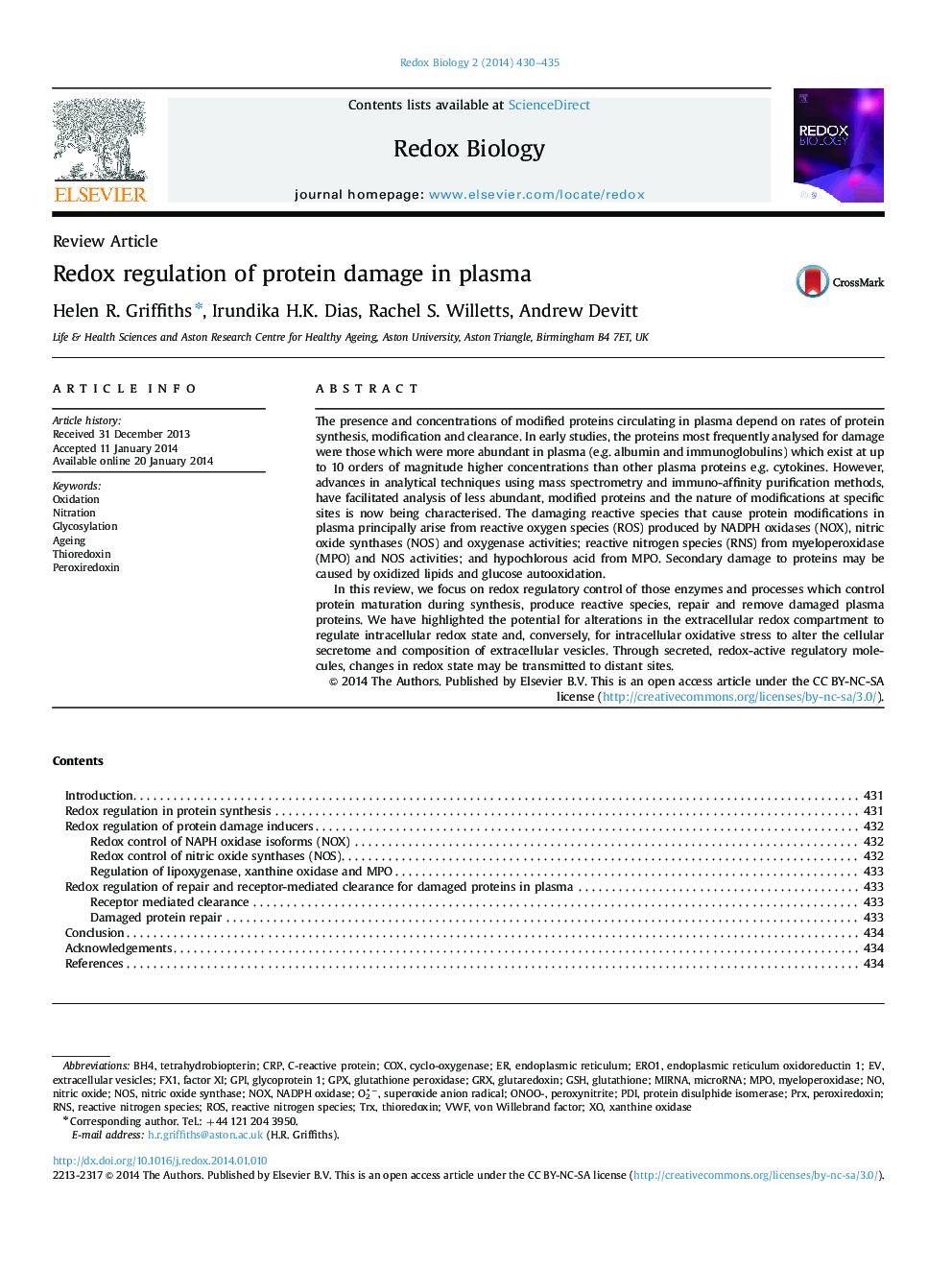| کد مقاله | کد نشریه | سال انتشار | مقاله انگلیسی | نسخه تمام متن |
|---|---|---|---|---|
| 1922980 | 1535848 | 2014 | 6 صفحه PDF | دانلود رایگان |
• Loss of redox homeostasis may affect the secretome content and protein concentration, transmitting redox signals to distant cells through extracellular vesicles.
• Damaged glycoforms may arise from oxidants or aberrant biosynthetic regulation.
• Reactive species generation by NOX and NOS is controlled through redox regulation.
• Cell surface and plasma thiol-oxidised proteins can be reduced and their activity modulated by thioredoxin, protein disulphide isomerase and reductases.
The presence and concentrations of modified proteins circulating in plasma depend on rates of protein synthesis, modification and clearance. In early studies, the proteins most frequently analysed for damage were those which were more abundant in plasma (e.g. albumin and immunoglobulins) which exist at up to 10 orders of magnitude higher concentrations than other plasma proteins e.g. cytokines. However, advances in analytical techniques using mass spectrometry and immuno-affinity purification methods, have facilitated analysis of less abundant, modified proteins and the nature of modifications at specific sites is now being characterised. The damaging reactive species that cause protein modifications in plasma principally arise from reactive oxygen species (ROS) produced by NADPH oxidases (NOX), nitric oxide synthases (NOS) and oxygenase activities; reactive nitrogen species (RNS) from myeloperoxidase (MPO) and NOS activities; and hypochlorous acid from MPO. Secondary damage to proteins may be caused by oxidized lipids and glucose autooxidation.In this review, we focus on redox regulatory control of those enzymes and processes which control protein maturation during synthesis, produce reactive species, repair and remove damaged plasma proteins. We have highlighted the potential for alterations in the extracellular redox compartment to regulate intracellular redox state and, conversely, for intracellular oxidative stress to alter the cellular secretome and composition of extracellular vesicles. Through secreted, redox-active regulatory molecules, changes in redox state may be transmitted to distant sites.
Journal: Redox Biology - Volume 2, 2014, Pages 430–435
